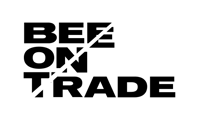Be aware of these guidelines and regulations if you are importing board games into the United States
Importing board games into the United States involves several steps and requirements depending on the intended audience of the game. If the board game is explicitly marketed towards adults, the process is relatively straightforward.First, you will need to identify the correct code from the Harmonized Tariff Schedule (HTS), which is a master list of duties and taxes that must be paid on all goods entering US ports. Most board games are under the code 9504.90.6000, which is duty-free.
However, you will still need to pay any applicable Merchandise Processing Fees (MPF) and Harbor Maintenance Fees (HMF), which are common fees levied at US ports to assist with port upkeep and maintenance.
If the board games you are importing are intended for children, the process becomes slightly more complex. The HTS code for children's products is typically 9503.00. In addition to paying any applicable duties and taxes, you will also need to meet additional regulations for children's products.
These regulations may vary depending on the specific nature of the product and the intended age range of the children using it. It is the responsibility of the relevant authorities to decide what constitutes a children's product and to establish the regulations that apply to it.
What is considered a children's product?
Determining whether a product is a children's product is an important step in the process of importing it into the United States. The Consumer Product Safety Commission (CPSC) is responsible for making this determination and has established guidelines for how to do so.
When deciding whether a product is intended for use by children, the CPSC considers a range of factors including the intended use of the product as stated by the manufacturer, whether the product packaging or labeling indicates that it is intended for use by any children and whether the product's manufacturer recognizes its use by children.
If a product is determined to be a children's product, it is subject to additional requirements to ensure the safety of children using it. These requirements are outlined in the Age Determination Guidelines.
These guidelines specify the specific testing and safety standards that a children's product must meet to be sold in the US market. The CPSC also requires that toys, board games intended for children, and other children's products be tested for harmful substances such as lead and phthalates by third-party labs.
A list of CPSC-approved labs can be found on the CPSC website. It is important to carefully review and follow these guidelines to ensure that your children's products meet all necessary safety standards and can be legally imported and sold in the United States.
How to obtain a Children’s Product Certificate (CPC)
Obtaining a Children's Product Certificate (CPC) is an important step in the process of importing and selling children's products in the United States. A CPC is a document that verifies that a product meets all applicable safety standards and is therefore safe for use by children. To obtain a CPC, you must have your products tested by a CPSC-approved lab to ensure that they meet these standards.
To apply for a CPC, you must provide certain information about the product, including its identification, the applicable safety rules, and the importer's contact information. It is mandatory to also include the date and place of manufacture and the date and place of testing.
In addition to the CPC, the importer or manufacturer must have a tracking label that is permanently attached to the product's packaging and, if possible, the product itself. The tracking label must include information about the date and location of production, identifying characteristics such as batch or run number, and an identifying mark determined by the manufacturer to help trace the source of the product.
It is important to carefully review and follow all requirements for obtaining a CPC and labeling children's products to ensure that your products meet all necessary safety standards and can be legally imported and sold in the United States. You can find more information about these requirements on the CPSC website.
